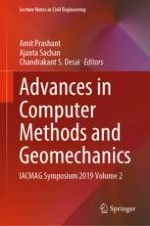2020 | OriginalPaper | Buchkapitel
Experimental Studies on Controlled Low Strength Materials Using Black Cotton Soils and Comparison of Results with Taguchi Model
verfasst von : B. N. Skanda Kumar, M. P. Naveena, Anil Kumar, A. Shashishankar, S. K. Darshan
Erschienen in: Advances in Computer Methods and Geomechanics
Verlag: Springer Singapore
Aktivieren Sie unsere intelligente Suche, um passende Fachinhalte oder Patente zu finden.
Wählen Sie Textabschnitte aus um mit Künstlicher Intelligenz passenden Patente zu finden. powered by
Markieren Sie Textabschnitte, um KI-gestützt weitere passende Inhalte zu finden. powered by
